When it comes to Chili, most people think of a very specific recipe. One where each ingredient is defined to the most minute details: each spice measured out to the milligram, the beans and tomatoes specified not only to the way they are prepared but even to the brand and the place they are sold at. Lots of times these recipes are guarded as a secret family heirloom, which the experts can immediately distinguish by the taste from among a number of similar chilis, as theirs is obviously superior to anything else.
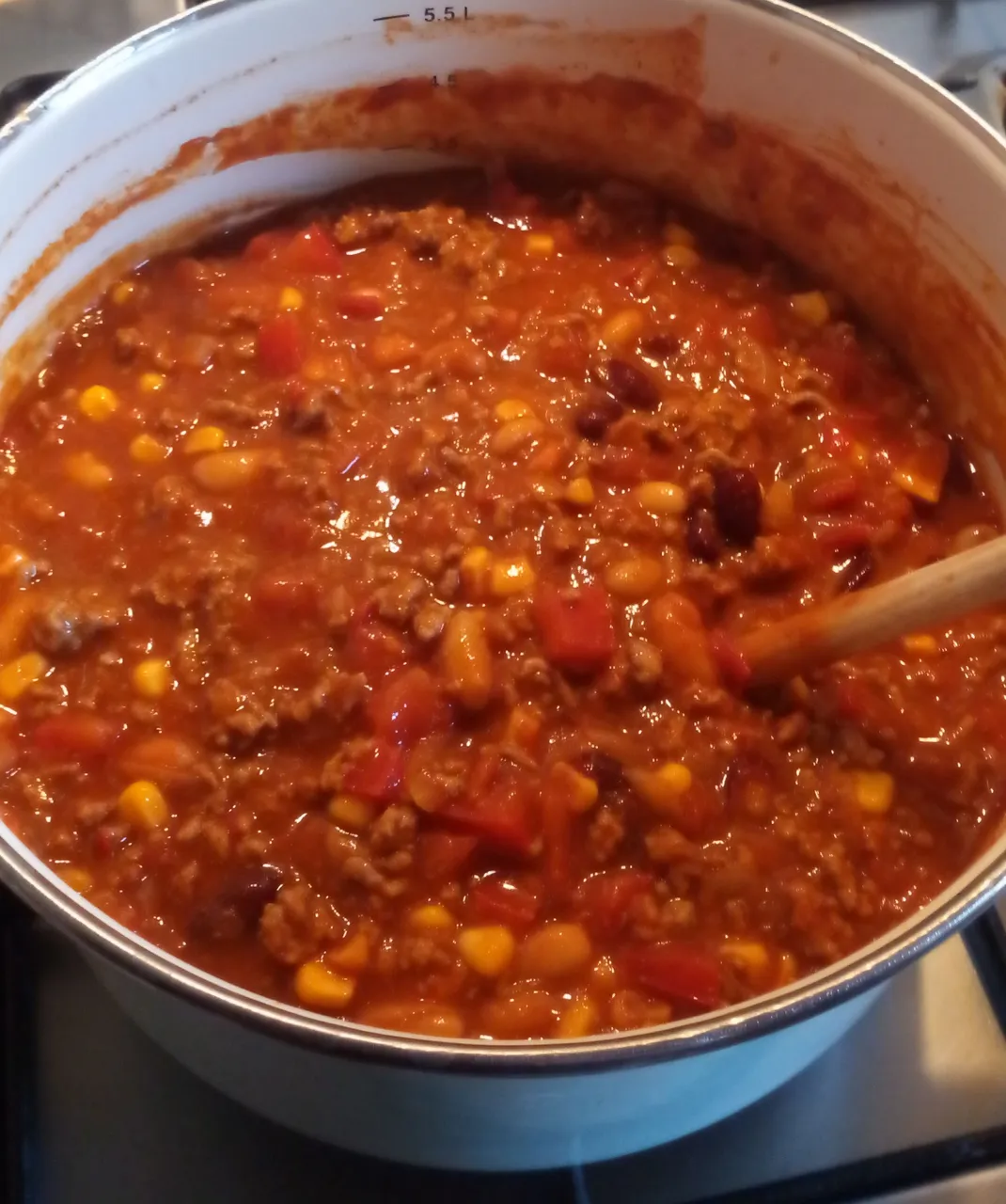
This is not going to be one of those recipes! If anything, it's the exact opposite: going back to the basics of making a Chili con Carne the way it's the most convenient for you, while leaving lots of room to adjust it to the way it suits your tastes.
What IS this Chili dish, actually?
The name Chili con Carne can be misleading in many ways, since literally translated it means hot pepper with meat, even though it clearly is meat with hot peppers. So it would be more appropriate to call it carne con chili... or rather chile, since that is the Spanish word for pepper (that is, anything from bell peppers through paprika to habaneros, but not the black peppercorns).
Further, it is not clear whether the dish is Mexican or rather Gringo, as all the ingredients are frequently eaten in Mexico, but typically not in this combination. However, when you're driving cattle across the range, or working on the railroad, the convenience of frying up some meat with beans and adding some hot peppers for taste almost offers itself. So let's just call this dish Tex-Mex and be done with the theory.
What's in a Good Chili?
Again, I'm sure everyone has their list of favorite ingredients, some of which may sound quite surprising, but if you've ever talked to real chili fans, you've probably heard things like: "... Well, when my granddaddy won the Great Chili Cookoff at the Legion Fair way back when, he used the same recipe he got from his grandpaw. Since then we would never make our chili without xyz ..."
These kind of statements can sound intimidating to anyone who has yet to learn their own style of chili, so I'd like to focus on the most basic ingredients instead:
- meat (Usually beef, but may be mixed with pork, or even other types. Or hey, you could even go with some vegan options!)
- beans (You'd be amazed at the varieties out there! Still, it's best to go with what's most available.)
- tomatoes (Fresh, canned, concentrated, or a bit of each.)
- onions and garlic
- spices (The dish is called chili, right? Salt and pepper are a must, plus whatever you think fits best - cumin, nutmeg, cayenne pepper ...)
- something to fry on (simple sunflower oil is okay, but we all know, everything tastes better with butter!)
- your own choice of something special (Well, there's no point at explaining this any further, right?)
The Most Straight-Forward Procedure
Making the Chili is actually so intuitive, it almost makes itself. First you chop the onions and the garlic. Here I used four medium sized onions and four cloves of garlic. I threw them in a big pot and plopped in a large chunk of butter with it, then set it on a low flame to simmer. Slow cooking is the key here, so I did not even turn it up throughout the entire cooking session.
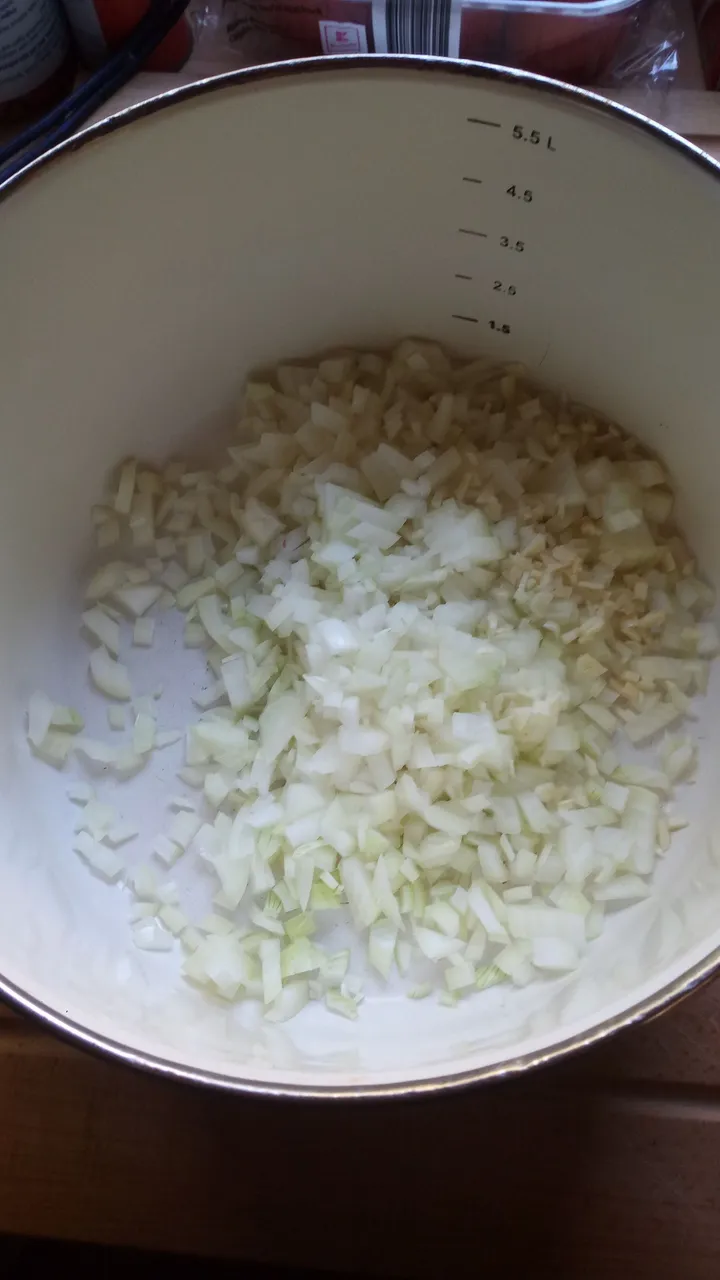
Once the onions are soft and see-through, I added the meat: 1 kg of beef-pork mix. Occasionally I gave it a nice stir, but let it simmer mostly until all the meat had changed from pink to brown. Meanwhile I cut the tomatoes into dices. There was no rush, as I would add the beans before them anyway, going from hard to soft, as is most typical.
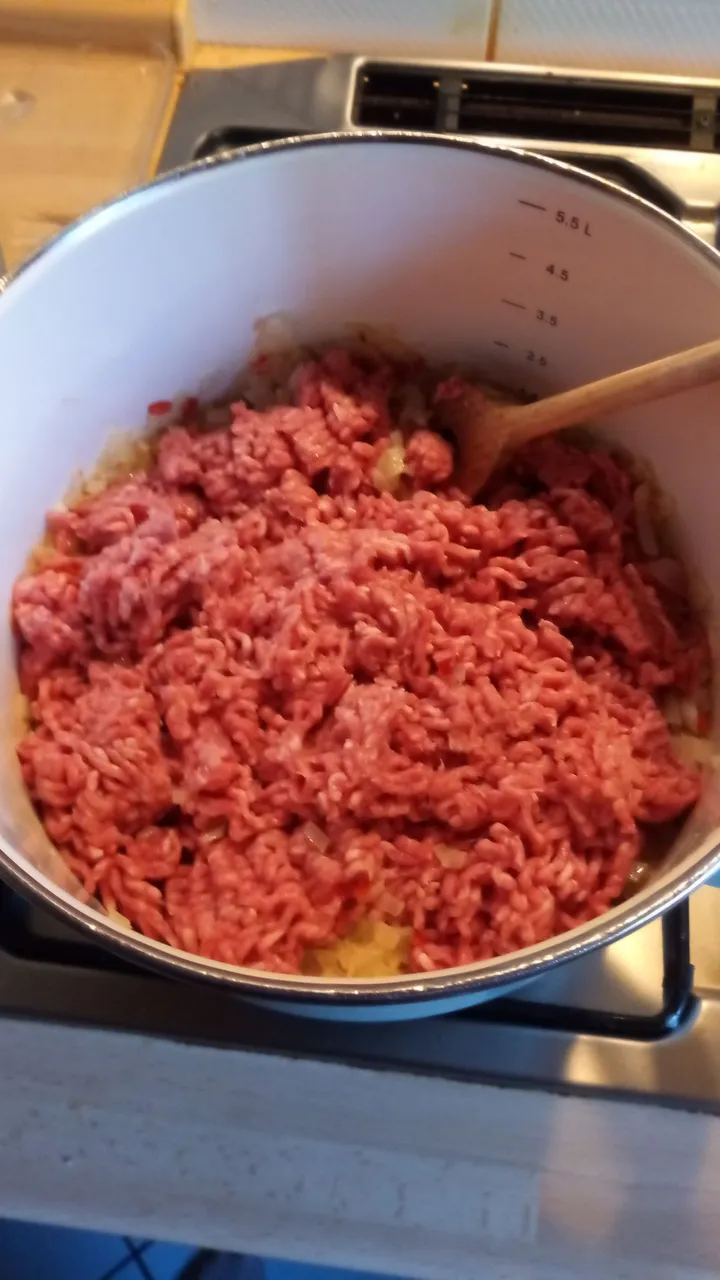
I used canned beans, which had been soaked, pre-cooked, and stored in brine, so they were quite soft already. You will notice that I also added a can of corn-beans mix. (Hey, I'm in Germany right now, so I wanted to follow the local idea what a Chili con Carne should be like. Otherwise I'd leave the corn out.) As for the beans, kidney beans or pinto beans are most common, though my personal favorites are black beans (as I know them from Mexico). As for the amount, I like to match the meat, so about 1 kg of beans in today's chili dish.
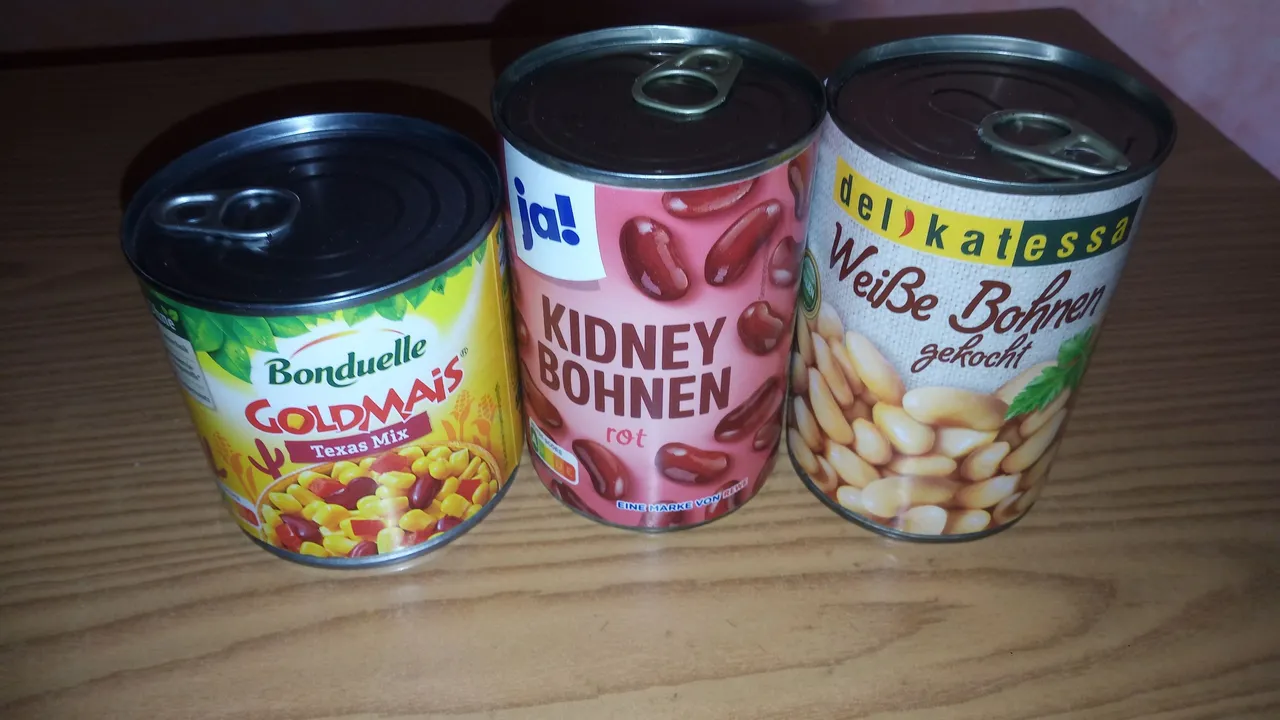
Next came the tomatoes. Here opinions diverge whether canned or fresh is better, and whether it's best to combine them with tomato puree, and/or concentrated tomato paste (and if so, in which proportions). My recommendation is for everyone to follow their gut feeling, and most importantly experiment around. They all have their pros and cons. Also here, the amount should be about the same as the meat and the beans, in other words a third of each.
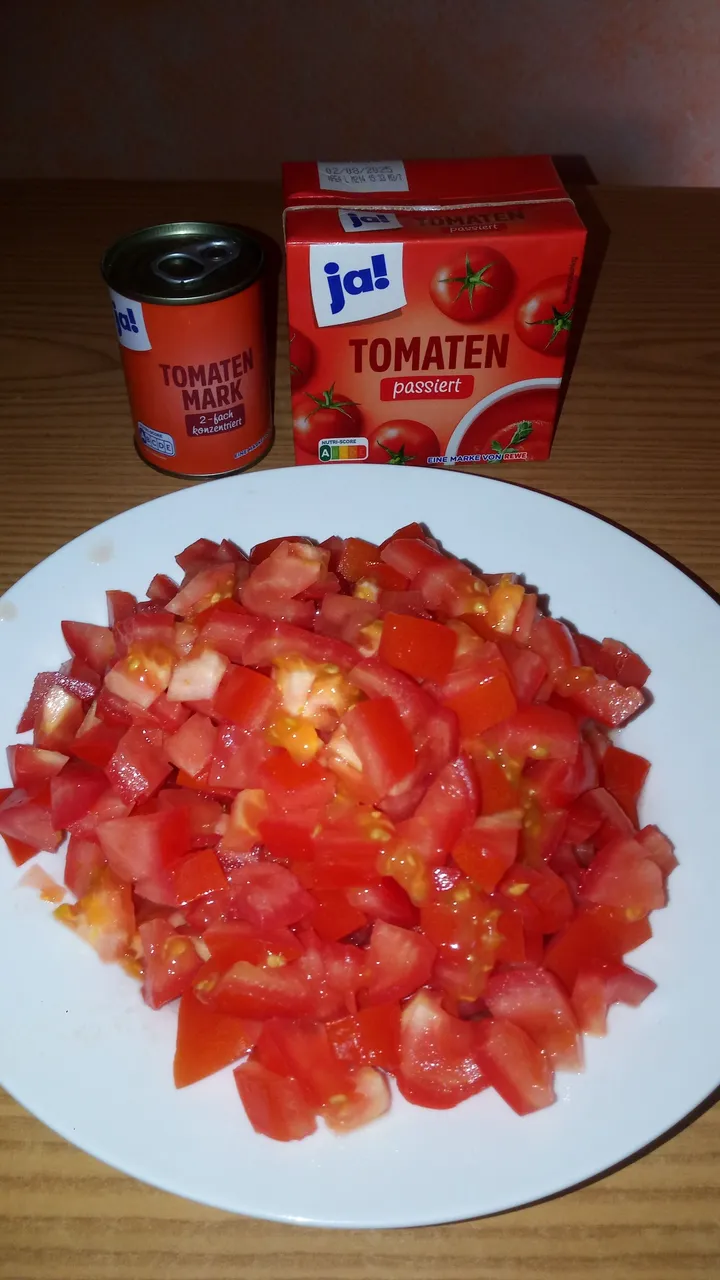
Once everything has been cooked up nicely, it's time to spice things up. Finally we can continue with the ingredient that gives this dish its name: the chili peppers! But in which form? If you are fortunate enough to live close to a Mexican market, where a seemingly limitless variety of chilis is waiting for you to burn your lips on, that may be all you really need. Otherwise, you can use chili powder (or flakes), paprika, cayenne pepper, chili sauce, tabasco sauce, or whatever your favorite hot stuff is.
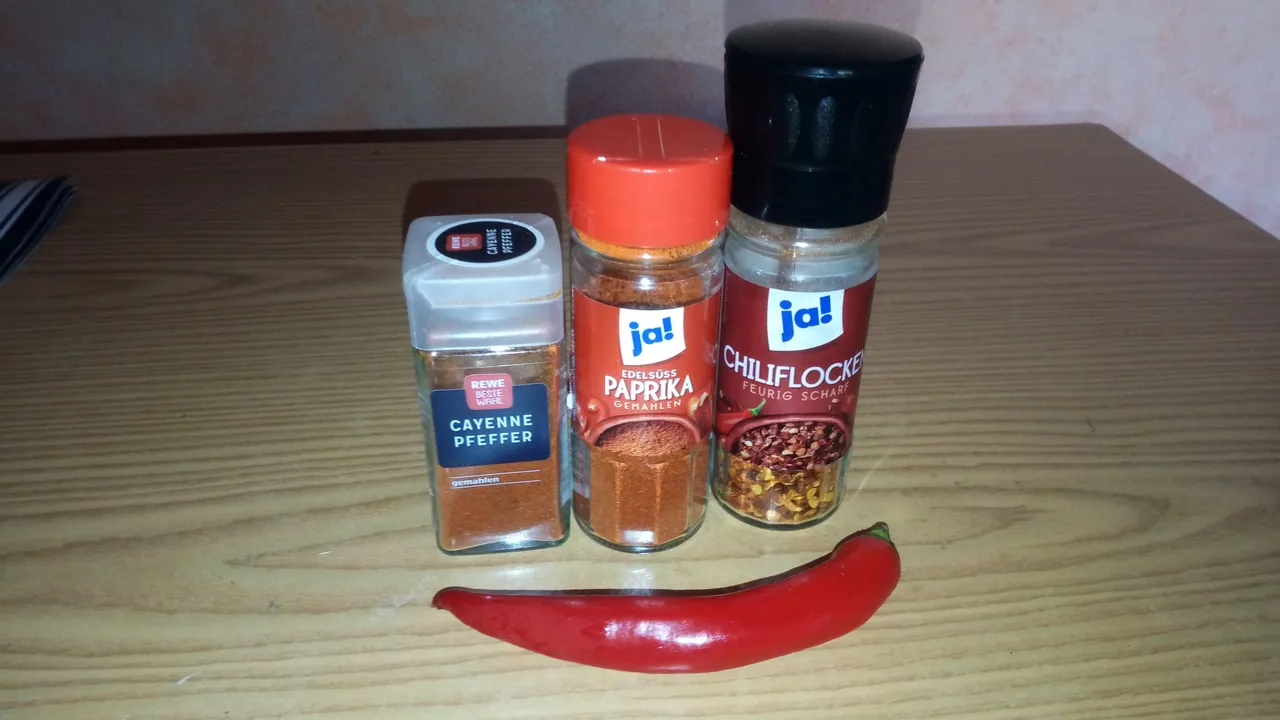
Clearly, the idea is not to create something that's so flaming hot that all other flavors are completely overshadowed. In fact, this is where culinary creativity comes in, which is also where those secret recipes are born. Some of them may rely on something as basic as brown sugar, honey, or maple syrup, which may save your dish in case you've gone a bit overboard on the spicy flavor.

Finally, the last and maybe most essential ingredient is time. When your chili has gotten a decent taste, turn off the stove and give it a few hours to cool off. Try it again, and see what is missing. Or it may be even more perfect than before, since all the flavors have been pulled together.
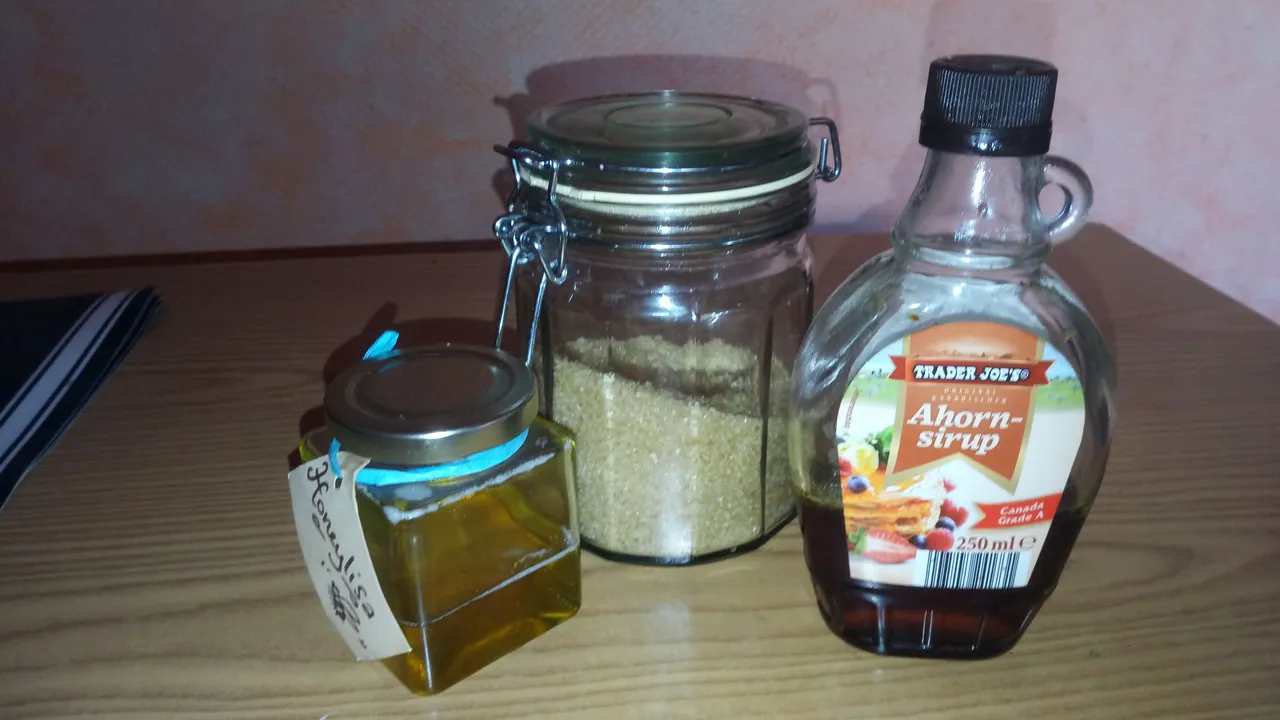
As you would expect, this post does not really fit into my What to Eat in Mexico series. Instead I put it with all my other food-related post into the collection You Are What You Eat. Please feel free to browse through both for more recipes and food posts.